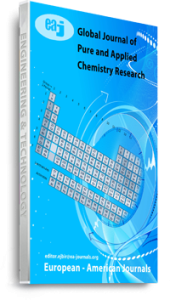Clay from Iliri was activated using hydrochloric and sulfuric acid of differing concentrations to acquire differing acidities. The chemical compositions of the raw clay and clay activated at different acid concentrations were analyzed to investigate the extent of cation dissolution. From the Na2O to CaO ratio, Iliri clay is swelling sodium bentonite mixed with feldspars, illite, kaolinite and plagioclase. The Langmuir isotherms of 1-aminobutane in isohexane agitated with clay slurries showed increase in clay acidity with increase in concentration of mineral acid used to leach the clay as well as the temperature at which the clay was thermally activated prior to experimentation involving adsorption of 1-aminobutane. The values of surface acidity, nm, for acid-leached Iliri clays ranged from 0.811×10-3 molg-1 to 6.7705×10-3 molg-1 and the kinetic equilibrium constant of adsorption, K, varied from 0.07828 to 0.7233 yet the surface area, A increased from 5.2702 x10-3 m2g-1 to 50.6700 x10-3 m2g-1 . Basing on acidity, pH, elemental and mineral compositions, the Iliri clay was resolved to contain montmorillonite.
Keywords: Acid-Leached, Changes, Iliri Clay, Surface Properties

